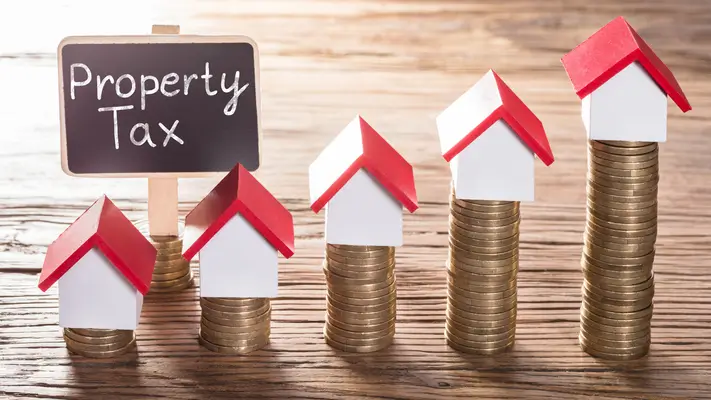
Gone are the days when you needed a 20% down payment to get a mortgage loan.
There are mortgage programs today that offer down payments as low as 3%.
But, how much should you put down on a house?
This article explores the down payment requirements for each type of loan, the advantages, and disadvantages of putting 20% down, how to choose how much you should put down.
Rate Search: Check Today’s Mortgage Rates
When You Should Use a 20% Down Payment
If you have 20% saved for the down payment and you won’t go broke by putting that amount down then getting a conventional loan and avoiding mortgage insurance is the best loan option for you. A 20% down payment allows you to avoid PMI of any kind with a conventional loan only.
With mortgage insurance premiums costing as much as 1% of the loan amount, equaling tens of thousands of dollars in savings in just the first 10 years.
Buying a House with 20% Down vs. 5% Down
Let’s say you’re buying a home that costs $300,000. Let’s see how that mortgage loan looks with a conventional loan with 20% down compared to putting 5% down. You are saving $20,000 on private mortgage insurance alone.
Conventional loan with 20% down
- 20% Down payment
- 4% interest rate
- $1,145.80 principal and interest payment
- $1,795 total mortgage payment
- No PMI
- $172,486 total interest paid
Conventional loan with 5% down
- 20% Down payment
- 4% interest rate
- $1,360 principal and interest payment
- $2,280 total mortgage payment
- $19,575 total of PMI payments
- $208,062 total interest paid
20% saves you:
- $200 a month on PMI payments
- $19,575 savings by not having PMI
- $36,250 in interest charges
A conventional loan with 20% down will save you roughly $200 a month on PMI payments. The mortgage insurance premiums will start to come down as the loan balance gets lower. PMI is automatically dropped from a conventional mortgage when the loan-to-value ratio reaches 78%.
Pros and Cons of Using a Larger Down Payment | |
Pros | Cons |
No private mortgage insurance (PMI) with at least 20% down | Less money in savings |
Lower monthly mortgage payment | First-time homebuyers have to wait longer to buy while saving for a large down payment |
Pay less interest over the life of the loan | Less money you can invest and earn compound interest |
Down Payment by Loan Type
Down Payment Requirement by Loan Type | |
Loan Type | Down Payment |
FHA Loan | 3.5% with a 580 credit score (10% with 500-579 score) |
USDA Loan | No down payment |
VA Loan | No down payment |
Conventional Loan | 5% - 20% |
HomeReady Loan | 3% |
Home Possible Loan | 3% |
203k FHA Rehab Loan | 3.5% |
FHA Loans – 3.5%
Credit Score | Down Payment |
500-579 credit score | 10% down payment |
580+ credit score | 3.5% down payment |
FHA loans require just a 3.5% down payment if you have a 580 credit score. The problem is that mortgage insurance will be required for the life of the loan. With a MIP rate of 0.85% of the loan amount, this will add up over the years and will ultimately cost you tens of thousands of dollars more than if you had gotten a conventional loan.
VA Loans – No Down Payment
If you’re a veteran of the U.S. military you may be eligible for a VA loan that requires no down payment. The real advantage of VA loans is that no mortgage insurance is required so if you qualify there are no real benefits of putting 20% down besides a lower monthly mortgage payment.
USDA Loans – No Down Payment
If you are buying a home in a rural area of the country you may be eligible for a USDA loan if your income does not exceed 115% of the area median income. Requiring no down payment and a mortgage insurance premium of just 0.35% they are much cheaper than your typical mortgage loan.
203k Loans – 3.5%
203k loans are a type of home rehabilitation loan that provides funds to purchase a home plus up to $35,000 to make repairs or renovations. A 3.5% down payment is required and mortgage insurance will be required for the life of the loan.
Home Possible & HomeReady Loans – 3%
The Home Possible and HomeReady loan programs are designed exclusively for first-time homebuyers whose income does not exceed 100% of the area median income and require just a 3% down payment.
Conventional Loans – 5% – 20%
Conventional loans do not require mortgage insurance if you have at least a 20% down payment. This can save borrowers tens of thousands of dollars over the course of the loan. You may be able to get a conventional loan with just 5% down.
Piggyback Loans – 10%
A piggyback loan is actually two loans in one. An 80-10-10 piggyback loan is one loan for 80% of the purchase price, a separate loan for 10%, leaving the borrower to come up with 10% down. The reason for doing this is to avoid having to pay private mortgage insurance while still putting just 10% down, instead of 20%.
Jumbo Loans – 10%-20%
A jumbo loan is a loan that exceeds the conforming loan limits in your area. This non-conforming loan has higher borrower requirements than typical mortgage loans because of their increased risk. Most jumbo loans require between 10%-20% down.



